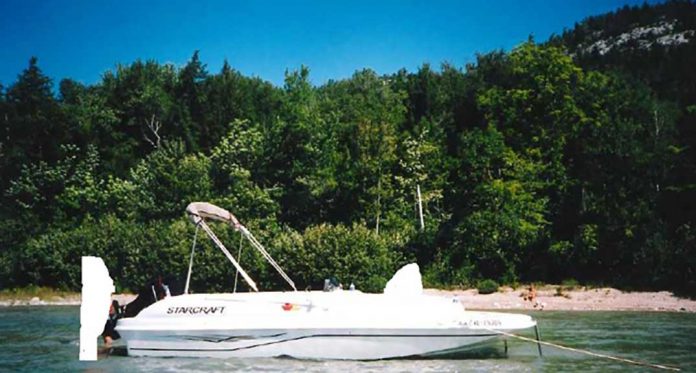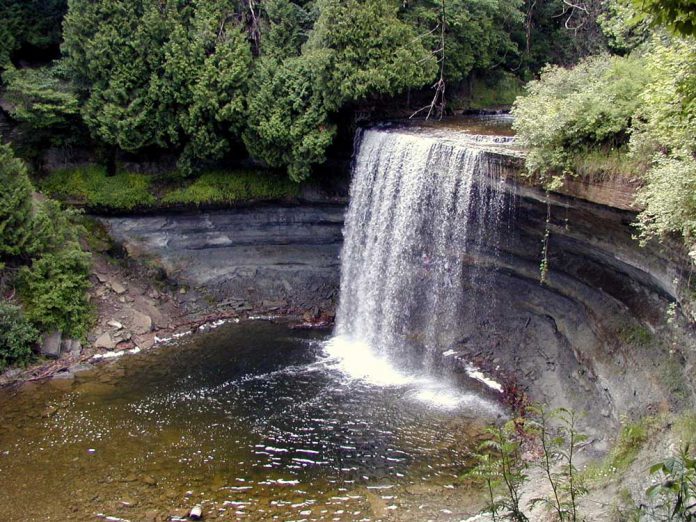MANITOULIN – Despite all the media coverage of climate change and its impact on the global environment and humanity’s future survival, coming to grips with what that actually means locally can be a challenge. Manitoulin Streams’ Climate Change Adaptation Liaison staff person Liam Campbell has been working diligently on a climate study of a number of factors that will impact life on Manitoulin as we know it going forward and some of the findings are now available—but much more needs to be done before the picture is as clear as it can be. Mr. Campbell has put out a call for anyone who may have old diaries, letters or other historical documents that might contain information on water levels, temperatures, precipitation and ice cover.
The climate study was funded in part through the Ontario Centre for Climate Impacts and Adaptation Resources (OCCIAR), a university-based resource hub for researchers and stakeholders searching for information on climate change impacts and adaptation and Manitoulin Streams Improvement Association, an award winning grass roots, not-for-profit organization that is focused on large-scale, community based efforts to rehabilitate aquatic ecosystems on Manitoulin Island.
While Mr. Campbell’s work is focussed on establishing a baseline for future study, two things have become very clear from the available data. Manitoulin’s temperature is showing a steady rise over time and the water levels around the Island’s shores is on a steady and perceptible decline.
Many Islanders have been breathing a sigh of relief as water levels have risen over the past couple of years to something closer to the norm, and in fact many inhabitants of the lower Great Lakes have been sounding the alarm over disappearing shorelines as water levels have risen significantly.
What can be lost in the shuffle of anecdotal observations of temperatures and water levels is the overall trends toward which those levels are headed. Once the long-term data is examined, some sobering evidence can be revealed.
“I do have all of the trends, in fact so many different trends that it can be difficult to absorb,” said Mr. Campbell. “Eventually, all of these will be available on the Manitoulin Streams website.”
Mr. Campbell, a scientist, was quick to add a caveat to his findings when applied from specific areas to broader regions. “Trends are only in areas where data is available,” he said. “But while weather over the Island might be different, the overall trends should be similar.”
Official records can be spotty and there are often large gaps in data sets, but Mr. Campbell’s work has been greatly assisted through groups like the Lake Manitou Area Association, which has ice in and ice out data recorded from 1980 to 2009. “An individual member also had observations of ice cover from 1993 to 2018.”
Unusual pieces of data, extraordinarily high or low temperatures for example, are often those things we remember as individuals. In scientific terms these are called outliers and when you are dealing in averages, those outliers can wreak havoc. Fortunately, Mr. Campbell has access to statistical analysis software to deal with those outliers.
Mr. Campbell’s findings include the observation that the mean (average) temperatures, as measured at the Gore Bay weather station, have been increasing at a rate of about 0.15 degrees Celsius per decade. “Seasonally, winter is seeing biggest increase, with 0.21 degrees Celsius in mean air temperature a decade,” he said. The data is over the period of 1935 to 2017. “If you only look at the last 30 years, the trend is actually more obvious.”
Looking at the minimum and maximum temperatures, the increase is 0.14 degrees Celsius. The winter minimum is increasing faster at 0.24 degrees Celsius. The numbers, (while not seeming to be so very much taken by themselves) as they accumulate, point to serious repercussions.
Although the trends are there, Mr. Campbell’s work is actually focussed more on establishing a baseline from which later observations can be informed.
Mr. Campbell stressed that, considering the politically charged nature of the current climate debate, he has been extremely careful to ensure that his analysis is free from conjecture or bias. Just like the Joe Friday character on Dragnet was wont to say “just the facts, ma’am.”
“It is not a partisan thing,” he said. “This will establish a baseline so that we can objectively look at what is happening going forward.”
When it comes to precipitation, the findings may have huge impacts in the not too distant future for agriculture on Manitoulin. Overall trends show the amount of precipitation between 1935 and 1993 has declined by 13.2 millimetres per decade. What seems a bright side of an increase in yearly precipitation over the last 30 years, however, isn’t so bright when the timing of the precipitation is taken into account. Spring sees an increase of 16.4 mm, but the summer trend sees the precipitation over that 30 year period fall by 13.4 mm, before rising again in the fall by 16.7 mm. “Summers are not getting as much precipitation,” he said. “Some crops will not do as well, but others might do better.”
Another ominous factor for agriculture is that the precipitation falling in the winter is not necessarily coming in the form of snow. “The amount of winter rain is increasing,” said Mr. Campbell. With increasing winter temperatures, a lot of that water is coming in an unfrozen format, aka rain, and then it is freezing into ice. This is not a good thing for overwintering crops that depend on a blanket of snow to protect them.
That being said, Mr. Campbell notes that the changes are not necessarily bad, per se, just indicative that there will likely be a need to change what types of crops are being grown locally. “It could be an opportunity,” he notes.
As for water levels, looking at the trends from 1962 to 2018, the average Lake Huron water levels have declined by .05 inches per decade.
“That’s part of the climate aspect,” said Mr. Campbell. “What we are seeing is an increase in temperature and that comes with an increase in evaporation and the rate of evaporation is increasing. The Great Lakes appear to follow a 30 year cycle, but Mr. Campbell admits that there is not yet enough historical data to meet the scientific bar.
The impact on fisheries is of great concern as the rise in average water temperature in Lake Huron between 1925 and 2017 was .05 degrees Celsius.
“That’s pretty astounding,” he said. “A lot of fish species’ life cycles depend on a particular thermal habitat. A lot of cold water fish such as salmon are cold water fish.” Walleye are more resilient, however, and bass enjoy warmer environs.
Ice cover on Lake Huron has shown a three percent decline per decade. On inland lakes, the Lake Manitou Area Association records from 1980 to 2009 show a trend to 3.2 days later for freeze up and a trend of 1.9 day for later break up. “We are losing around five days of ice cover a decade,” he noted.
Without the “official” data of government and institutional records, Mr. Campbell is looking for assistance from the public who may have historical records hidden within letters and diaries.
“If you know of someone who has been keeping records, please reach out,” he said. “We are unique on Manitoulin, not only in the type of people but in the climate. Although we may be protected somewhat by Lake Huron, we should do everything we can to protect that.”
Mr. Campbell noted that the type of remedial work that Manitoulin Streams engages in, in partnership with local land owners and municipalities, goes a long way toward helping to do just that: protecting and enhancing the fishery and biodiversity that helps make Manitoulin the little bit of heaven we all enjoy.





